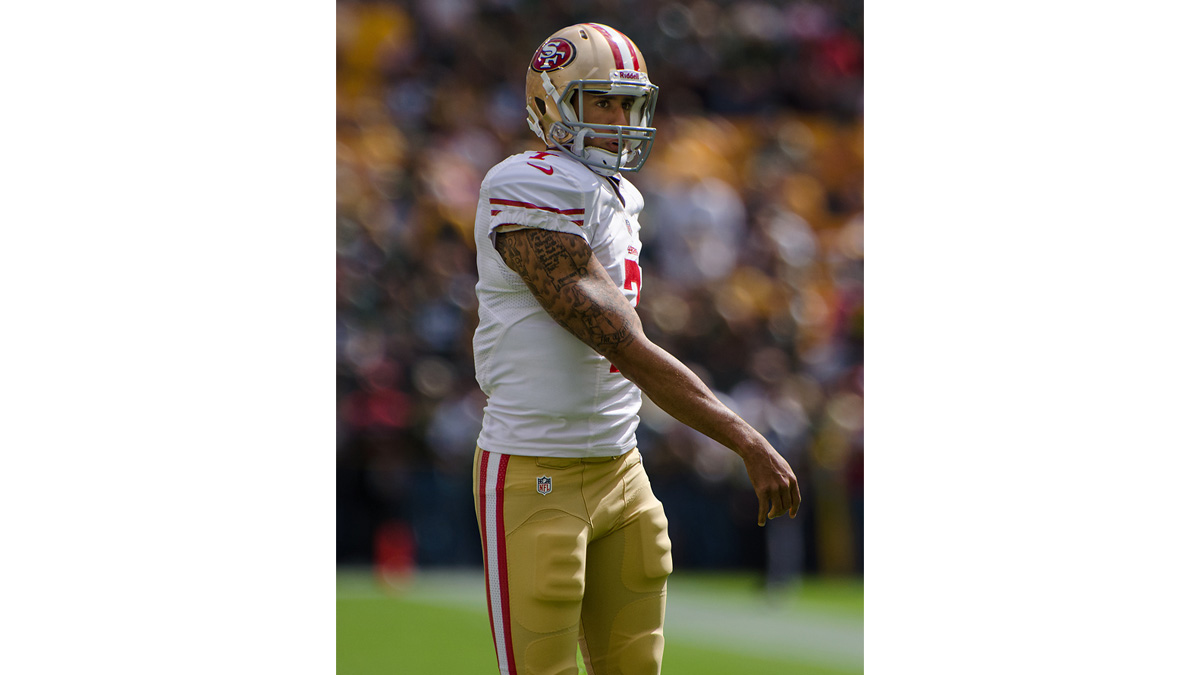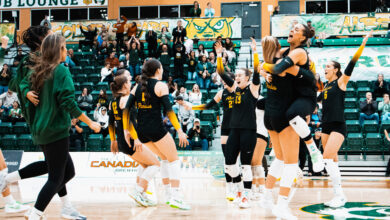Colin Kaepernick and “the right way to protest”
 Image Courtesy of Mike Morbeck
Image Courtesy of Mike MorbeckAt the end of August before a NFL preseason game, San Fransisco 49ers quarterback Colin Kaepernick took a knee during the American national anthem, a silent protest against “a country that oppresses black people and people of colour.” His protest angered many people and sparked instant controversy over his methods and motivations.
Athletes rarely elicit such a negative reaction when protesting, mostly because they take great pains to stay as politically correct as possible even when it involves activism. This is exemplified by the NBA-megastar-led monologue at the ESPY Awards in July. Carmelo Anthony, LeBron James, Dwayne Wade, and Chris Paul opened the show by calling for an end to gun violence — a cause everyone can get behind.
This moment earned the praise of fans and media as an example of athletes using their platform the right way. Their address — while well-intentioned and extremely important — made sure to offend no one. Kaepernick’s protest though, is rooted in controversy. In a league and a fan base so enthralled by America’s military industrial complex and vehemently opposed to anything deemed unpatriotic, Kaepernick’s protest is aimed at one of America’s most unquestioned and sanctified institutions: the police. Consequently, Kaepernick’s protest has been angering players, coaches, owners and the general public, having recently been voted “the most hated NFL player” by fans in a new poll.
While the 49ers quarterback’s protest has angered many people, he has significantly guided public discourse as well. He’s on the cover of TIME magazine, one of only seven athletes to grace the cover in the past decade. Entire high school football teams are now sitting for the national anthem, along with fellow NFL players and even professional women’s soccer players. His protest has been in the mainstream media news cycle for nearly a month — decades in regular time — with no signs of slowing down. He has brought a public awareness to the issue that few athletes ever have.
The most intriguing element of the Kaepernick saga is juxtaposing it with other athlete protests. While LeBron, Carmelo, Wade and Chris Paul were lauded for using their platform correctly and for protesting the ‘right way’ — even though their address was quickly forgotten days after the ESPY’s — Kaepernick was shamed for daring to kneel, for “disrespecting the people who die everyday for this country,” for creating a distraction for his team, for “protesting in the wrong way,” even though society is still reacting to his protest weeks after the fact.
It seems as though for athletes and celebrities, the “right way to protest” is ironically almost always ineffective, and is one that continues to allow people feel comfortable and secure in their opinions. But for those who are legitimately attempting to make a statement and stand for their beliefs, they are often criticized for “protesting the wrong way,” because by attempting to sway public sentiments or by voicing their true opinions, they are seen to be leaving their lane as entertainers.
It is thus not a coincidence that Kaepernick’s protest has been both the most controversial athlete protest in some time and also the most impactful. The same unwavering conviction in his beliefs that has made many angry has required others to examine what would make a man look at the American flag and not see it represent him. It is this conviction that has caused the disparity in reaction.
Other athletes who have guided public discourse through protest have had to have the same rigidity and resolve in their beliefs as Kaepernick. Muhammed Ali refused to serve in the Vietnam war when he was drafted, stating that he’d rather go to jail then “shoot my brother, or some darker people…for big powerful America.” He quickly became one of the most hated men in the country, and was seen as disrespectful and treasonous to the country and its military. His refusal led to him being stripped of his title and boxing license for three years of his fighting prime. But as public sentiment started to shift against the war, especially amongst young people, Ali was seen as one of the moral leaders of anti-war movement. Later on, his activism combined with his boxing talent not only made him arguably the most famous athlete in history, but it also influencing a generation of young Americans on how to think about race relations.
The “right way to protest” is almost always safe and harmless, and is a brand of activism that is unwilling to make anyone feel uncomfortable. The “wrong way to protest,” on the other hand, is the kind of activism that usually makes people examine their most deep seated prejudices and biases. It is those kinds of protests — protests like Colin Kaepernick’s — that are the most effective.




